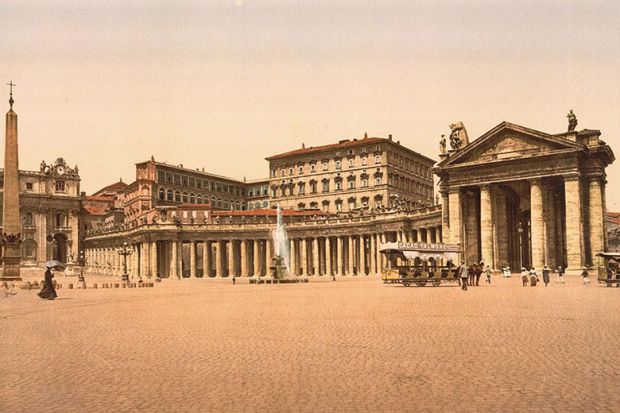In 1869, the world’s 2,500 Catholic bishops travelled to Rome for a historic conference known as the Vatican Council (later, Vatican I).
The crucial business was whether to declare as a dogma that the Pope is infallible when speaking on faith and morals. The council also discussed papal “primacy”, the notion that the Pope alone is the Church’s unquestioned organisational head: an extreme form of papal leadership known as “ultramontane”, literally in charge “across mountains”. This turned out to mean that local diocesan discretion gave way to the Vatican.
Led by Pope Pius IX, the influential ultramontane cabal of bishops argued that the dogma of papal infallibility was essential for the survival of the Church. A smaller international group, the “inopportunes”, disagreed.
The Pope’s inerrancy had been accepted loosely since the early Church. It amounted to popes settling doctrinal arguments between squabbling factions. But according to John O’Malley, a church historian at Georgetown University, this quest to make papal infallibility and primacy a condition of being a Catholic was less theological than political.
Pius IX had been losing piecemeal the Papal States – the territories in the midriff of Italy over which he and his predecessors had held sway for centuries. The unifiers of Italy, led by Giuseppe Garibaldi and Giuseppe Mazzini, had only the city of Rome to annex before achieving their goal. At the same time, burgeoning secular nation states across Europe were undermining Catholic influence.
Doomed to be a stateless prisoner in the Vatican, Pius IX believed that something drastic was called for to boost his authority. The dogma was ratified in a decree known as Pastor Aeternus (Eternal Shepherd), voted in virtually unanimously by the council on 18 July 1870. O’Malley notes that, as media, communications and travel expanded, the proclamation of absolute spiritual and organisational power did indeed enhance papal authority.
Controversies erupted. Former British prime minister William Gladstone argued in 1874 that Catholics now had divided loyalties as citizens. Otto von Bismarck, chancellor of Germany from 1871, used the dogma to justify virulent persecution of Catholics through the decade.
An example of the erosion of papal infallibility over time is the fate of Paul VI’s 1968 encyclical, Humanae Vitae, banning contraception. What price papal infallibility in view of the ever growing split between this major papal teaching and members of the lay faithful? O’Malley, a Jesuit priest, provides an elegant historical narrative, but stops short of critiquing the mass rejection of papal teaching on this central issue of faith and morals.
John Cornwell is the director of the Science and Human Dimension Project at Jesus College, Cambridge, and the author of Hitler’s Pope: The Secret History of Pius XII (1999), among many other books.
Vatican I: The Council and the Making of the Ultramontane Church
By John W. O’Malley
Harvard University Press
320pp, £17.95
ISBN 9780674979987
Published 25 May 2018


